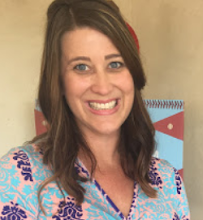Hello, scientists! Use the websites below to understand more about force, motion, and energy.
Remember to read the directions and ALL information on the sites.
When you are finished, leave a comment answering one of the questions posted in class. Remember to check spelling, capitals, and punctuation before you publish your comment!
2nd & 3rd grade
Part I: Friction
http://www.bbc.co.uk/schools/scienceclips/ages/8_9/friction.shtml
Part II: How Pulleys Work
http://www.neok12.com/php/watch.php?v=zX56004f445662567a447c45&t=Simple-Machines
Part III: Forces in Action
http://www.bbc.co.uk/schools/scienceclips/ages/10_11/forces_action.shtml
4th grade
Remember to read the directions and ALL information on the sites.
When you are finished, leave a comment answering one of the questions posted in class. Remember to check spelling, capitals, and punctuation before you publish your comment!
2nd & 3rd grade
Part I: Friction
http://www.bbc.co.uk/schools/scienceclips/ages/8_9/friction.shtml
Part II: How Pulleys Work
http://www.neok12.com/php/watch.php?v=zX56004f445662567a447c45&t=Simple-Machines
Part III: Forces in Action
http://www.bbc.co.uk/schools/scienceclips/ages/10_11/forces_action.shtml
4th grade
Part I: Forces
Part II: Parkworld Plot
Part III: Friction

When forces are unbalanced the object will change speed direction or shape!
ReplyDeleteIf forces are balanced the speed of an objects will stay the same and an object that is not moving remains still.
ReplyDeleteWhen force becomes unbalanced it will change its speed or direction.
ReplyDeleteThe tool the measures force is Newton.
ReplyDeleteForces are balanced when the forces are effecting the object/item equally.
ReplyDeleteWhen forces are balanced the object does not move because they are pulling the same amount, so there ends up being no movement.
ReplyDeleteThree things force can change about an object are speed,direct and shape of an object.
ReplyDeleteYou can measure force using a spring and nueton's.
ReplyDeleteWhen force becomes unbalanced it will change its speed or direction.
ReplyDeleteWhen a force is unbalanced the object will change direction shape or speed.
ReplyDeleteThe tool to measure force is newton.
ReplyDeleteA force can change speed and direction.
ReplyDeleteI learned that force can make more or less friction
ReplyDeleteand that the surface dose the same!
I learned a toy car does not go very far on polished wood.
ReplyDeleteToday in science block with Mrs Blake I learned that force is when you push something and it moves and movement is when something moves like when you walk it is motion because you moved.
ReplyDeleteI learned what an aerospace engineer is.
ReplyDeleteToday in science I learned that on ice a toy car goes faster than a toy car on wood and polished wood.Polished wood is also called vinyl.
ReplyDeleteI learned that the force friction can slow down things on wood very slow but almost not at all on ice.
ReplyDeleteI learned an aerospace engineer is someone who builds engines for planes.
ReplyDeleteToday in science on my first website I learned that work is when you push something with force and it moves well it is work,force is when you push something like if you push an bookshelf it is force, and movement is when you make a movement as if i was taking a walk I am moving it is movement.
ReplyDeleteToday I learned that the more friction you put on a object the slower it goes.
ReplyDeleteI learned that toy cars can't move that fast on carpet.
ReplyDeleteI learned that force is the push on the object and motion is the movement of the object.
ReplyDeleteI learned the more friction on a object the more slow it will move.
ReplyDeleteI learned that on ice toy cars go faster then on wood.
ReplyDeleteI learned that if you apply to much power to a light bulb it will stop working.
ReplyDeleteToday in science on my 2nd website I learned that the pulleys that lift a space ship all together can lift up to 120 tons which is a lot.
ReplyDeletethere is more friction when something is rough and you
ReplyDeletego slower.
I learned that when I pushed the car back to the red light it still did not go all the way on the carpet.
ReplyDeleteI learned that when you add a parachute to a vehicle it slows it down.
ReplyDeleteI learned that gravity and friction are forces.
ReplyDeleteI learned that with a heavier weight the car goes faster.
ReplyDeleteWhen forces are balanced on a stationary object the object does not move, but when the forces are balanced on a moving object the object does not accelerate in any way. This is really interesting!!
ReplyDeleteI found out that force is measured in newtons.
ReplyDeleteI learned that a baseball bat is a simple machine,a lever.
ReplyDeleteI learned that your shows are a pulley. I also
ReplyDeletelearned that a ship is a inclined plane.
I learned that a car is a wheel and axle and that lots of things are simple machines.
ReplyDelete